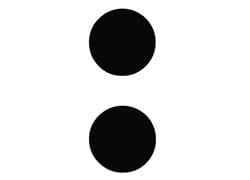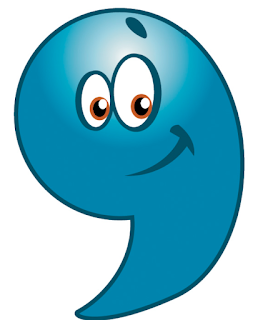Collaborative online exercise about direct speech vs reported speech on
https://www.englishgrammar.org/direct-and-indirect-speech-exercise-2/
What are Shakespeare’s
Most Famous Quotes? by Brad
Witter
Although they were written more than 400 years
ago, the words of William Shakespeare remain timeless. Thanks in large part to
the Bard of Avon's ability to poetically capture universal human emotions with
overarching themes that continue to remain relevant, many continue to find his
writing highly relatable.
In fact, whether one
knows it or not, many lines of his work live far outside high school English
classrooms. Shakespeare has been credited with either coining or at least
popularizing myriad phrases that have become so ingrained into the everyday
lexicon that many aren't even aware of their origins. Just a few examples: ‘Love
is blind’ (The Merchant of Venice), ‘Break the ice’ (The Taming of
the Shrew), ‘Be-all, end-all’ (Macbeth), and ‘wild-goose chase’ (Romeo
and Juliet).
Aside from the pages of
his tragedies and comedies, some of Shakespeare's longer phrases and quotes
continue to live on, frequently referenced throughout pop culture, emblazoned
on posters, and even in tattoos. (Actress Megan Fox, for example, has a line
from King Lear — ‘We will all laugh at gilded butterflies’ —
inked on her shoulder.)
Here there are 10 of the
poet's most famous quotes:
Prince Hamlet's
soliloquy in the Danish-set tragedy — particularly the first line — has been
widely referenced in modern pop culture. Of course, ‘the question’ can be
broadly applied to many different situations, but at its inception, the speech
was part of a deeply philosophical internal debate about the pros and cons of
human existence.
Also taken from the
seminal tragedy, the line, which was spoken by Polonius as a pep talk of sorts,
has resonated throughout the generations for its universal theme of sticking to
one's values when faced with a dilemma.
Using death as a
metaphor, the Roman ruler minimizes his wife Calpurnia's fears that he may soon
die, in the play. Many identify with the call to bravery in the present moment
versus "dying inside," so to speak while wasting one's life in fear
of an inevitable end.
Cassius uses this speech
to convince Brutus to join the assassination conspiracy against his friend
Caesar. What he intended to convey is that people can control their destinies
and that they're not necessarily pre-determined by some divine power. ‘Et tu,
Brute?’ a Latin phrase meaning ‘even you, Brutus?’ has also come to signify an
unexpected betrayal by a loved one.
In Shakespeare's tragedy
about the titular ‘star-crossed lovers,’ Juliet's line references her and
Romeo's warring families and that their last names — Montague and Capulet —
shouldn't define who they are or negate their romance. Instead, she's saying
that a name given to an object is nothing more than a collection of letters,
and changing what something is called doesn't change what it inherently is.
Taken from Romeo
and Juliet's iconic balcony scene, Juliet speaks these words as she is
saying goodbye to Romeo. The highly relatable — though seemingly paradoxical —
sentiment notes the sadness of saying goodbye to a loved one, while also
pointing to the ‘sweet’ excitement of thinking about the next time they will
see each other.
Spoken by Jaques in the
17th-century comedy, the frequently quoted passage contends that life
essentially follows a script and that people play roles, as in a theater
production, during its various stages.
Much like the phrase ‘grin
and bear it,’ the Duke of Venice's words act as a piece of advice to follow
when one is wronged. His claim is that when one doesn't show that he or she is
upset, it removes a sense of satisfaction for the wrongdoer.
Sometimes rewritten with
the phrase ‘heavy is’ in place of "uneasy lies,’ the dialogue of King
Henry IV conveys the great difficulties of leaders who are tasked with
great responsibilities and difficult decisions.
In essence, the quote written on a scroll in the 16th-century play means that appearances can sometimes be deceiving. Shakespeare originally used the word ‘glisters,’ an antiquated synonym of ‘glitters.’
Quotation
Marks
What is the
quotation marks symbol?
The quotation
marks symbol is a type of punctuation used for setting words and passages apart
from the rest of the text. Quotation marks, or 'quotes' for short, look just
like commas, except quotation marks are at the top of a line instead of at the
bottom. Double quotation marks are simply two “commas” next to each other,
while single quotation marks use only one comma. However, unlike commas,
quotation marks can face both directions.
The direction
a quotation mark faces depends on whether it comes before the quote or
after.
'How do we use quotation marks?' the student asked their teacher.
Types of quotation marks:
There are two types of quotation
marks:
1.- Single quotation marks
2.- Double quotation marks
Uses of the single quotation
marks in British English:
1.- To quote a
source directly
Stephen Hawking warned that the
Higgs boson could potentially lead to ‘catastrophic vacuum decay’ in the
universe, caused by a ‘bubble of the true vacuum expanding at the speed of light.’
To indicate a direct quote, a
passage that is copied verbatim from another source. If you’re using the same
word, sentence, or phrase as another author, put those words in between
quotation marks.
This is most common in nonfiction
writing when a writer uses a phrase or sentence from a preexisting source,
usually to support their thesis.
2.- For dialogues or transcribing
speech
He said, 'It's time I went home.'
'Look at that church,' the guide said, 'which is the most ancient one in town.'
'I'm beat,' my little sister said, 'I feel drowsy.'
She asked, 'Will this be on the test?'
‘Where is the emergency room?’ he
asked the nurse urgently.
'Don't leave me!' she screamed.
Quotation marks are commonly used
to transcribe what a person said, as with an interview or eyewitness account.
On the other hand, In fiction, they’re used for dialogues or whenever a
character says something out loud.
3.- To sign the
titles of short works
Written by Sylvia Plath, ‘Tulips’
is a sad poem with a happy title.
Typically, the titles of
short-form works like poems, short stories, and songs use quotation marks. Conversely,
titles of long-form works, like books, films, and stage plays, use italics
instead.
4.- To set apart
a word to show irony, sarcasm, or skepticism (scare quotes)
My ‘pet’ is really just a stray
cat that comes by once a day.
Scare quotes are used to show
that the writer doubts the validity of a word. They are commonly used to show
irony, sarcasm, or how something is 'popularly termed.' They can have the same
meaning as the phrase so-called, including suspicious insinuation.
5.- To discuss
words as words
The ‘p’ in ‘pterodactyl’ is
actually silent.
When discussing a word,
phrase or letter in writing without using its intended meaning, set it apart
with quotation marks. However, depending on the styling format, some writers
alternatively use italics, without quotation marks, for this purpose.
6.- To differentiate
a nickname from a given name
Dwayne ‘The Rock’ Johnson can’t
escape his origins as a wrestler.
When writing a person’s nickname
together with their given name, set the nickname apart with quotation marks.
The standard is to place the quoted nickname between the first name and the
surname, although that’s not necessarily a rule.
If the nickname is how a famous
person is most commonly recognised, as with many historical figures, then no
quotes are necessary.
Many historians believe that
Richard the Lionheart was gay, but that evidence has been removed from
historical records.
When to use double quotation
marks in British English
‘My last boss used to always say,
“You sell more before lunch than the others sell in a week,”’ Amira mentioned
in her job interview.
In British English, double
quotation marks are used only for quotes that appear inside other quotes; for
example, a passage that already has a quote in it. Nevertheless, in American
English, the rules are reversed, so double quotes are used primarily for
quotes, dialogue, titles, etc., and single quotes are used only within other
quotes.
ELLiS, Matt
(2023) Quotation Marks: Rules and Examples. Obtained from https://www.grammarly.com/blog/quotation-marks/
(Searched on the 20th of February 2023)
Position of the quotation marks







